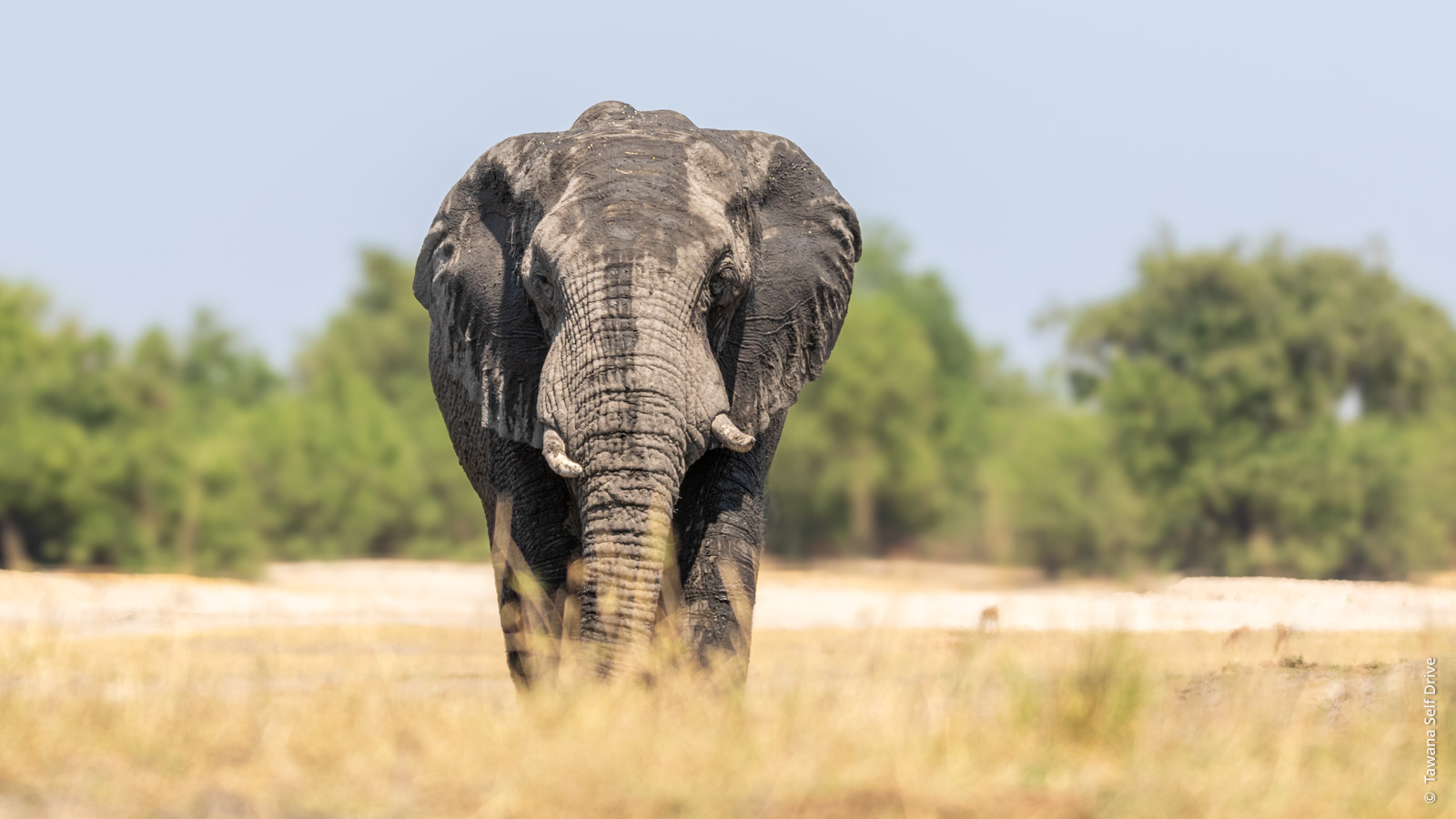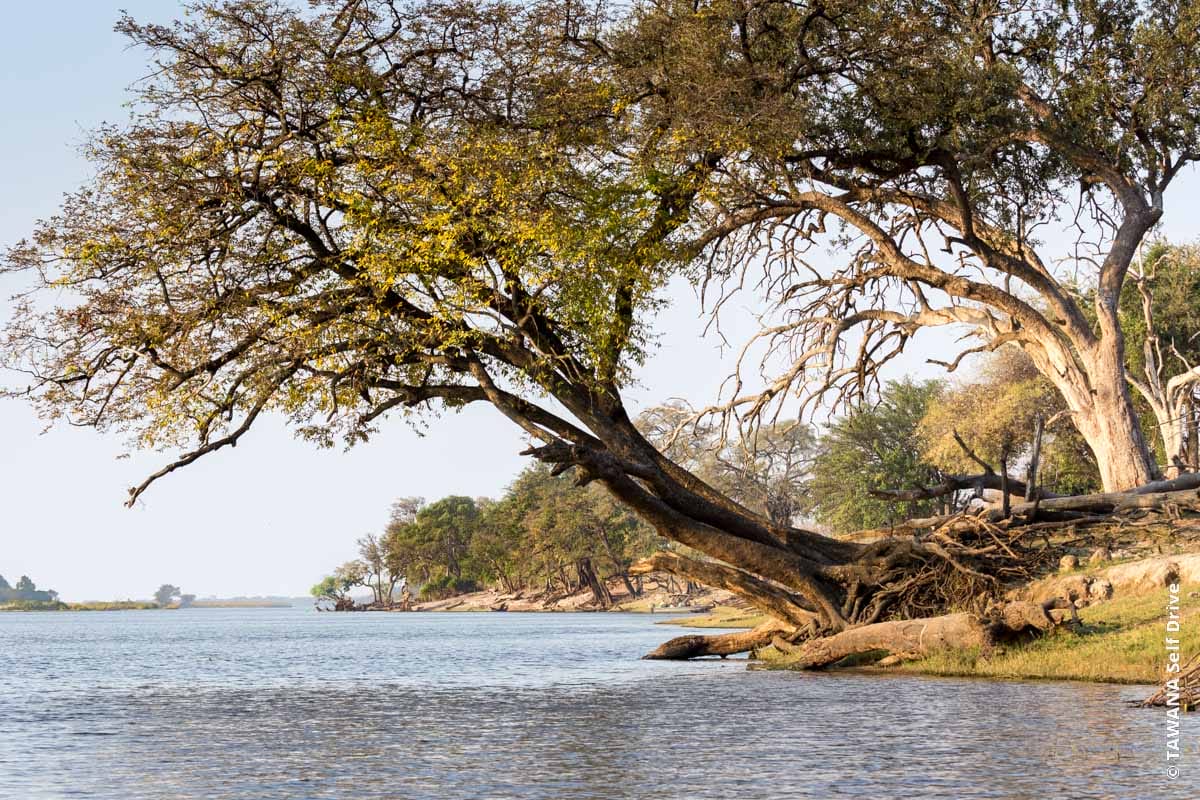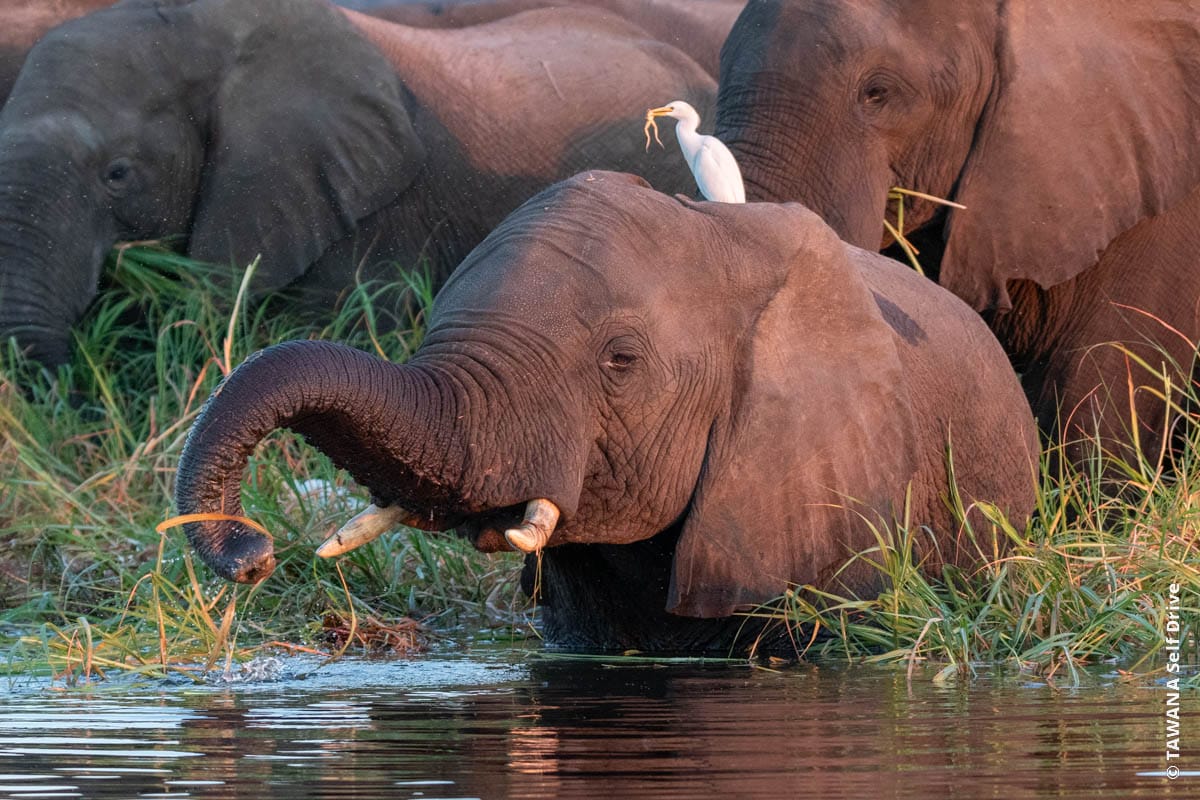The story of Chobe National Park
The history of Chobe National Park began in the 1930s when the idea emerged to create a reserve that would protect animals and attract visitors. 24,000 km² were then closed to hunting before an invasion of tsetse flies led to the project’s failure. After the Second World War, the Chobe district developed around timber exploitation. A sawmill was even set up in Serondela. However, the desire to make Chobe a protected area resurfaced in 1957. The project finally led to the creation of a national park 10 years later with the dismantling of all human activities. In the 1980s, the park expanded with the addition of the Mababe and Nogatsaa triangles to reach its current size.
Meet Africa’s largest elephant population
Today, Chobe National Park is the most popular in Botswana. It dazzles visitors with the beauty of its river and the unrivalled richness of its wildlife, spread across four major ecosystems:
Size: 11,700 km2
When to visit: Chobe is an exciting safari destination all year round. Animals move around the park in complex patterns, determined by rainfall and food availability. So there is always something amazing to see somewhere!
Wildlife: With the exception of rhinos, Chobe National Park is home to all of Africa’s big game animals. Elephants and buffalo are abundant, and there is an interesting population of lions and leopards, as well as 450 species of birds.
Things to do: Self-drive safaris, game drives, boat safaris
Why visit the Chobe National Park?
Who are the stars of Chobe National Park?
- 1
Elephants
- 2
Buffalos
- 3
Lions



